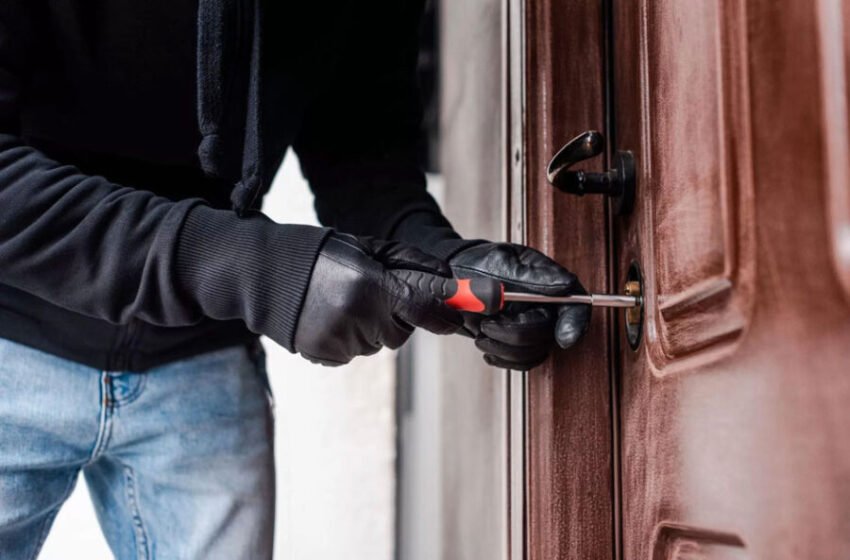Five Common Mistakes People Make With Home Security Systems How to Avoid Them

Home security systems are supposed to make life easier and safer, but plenty of people set them up in ways that leave gaps big enough to drive a moving van through. It’s not always a matter of buying the wrong gear. It’s how you install, power, or use it that makes the difference. And with all the tech available now, it’s easy to assume everything is plug-and-play. In reality, small missteps can lead to big oversights. Whether you’re new to home security or just want to make sure your setup is actually doing its job, here are five common mistakes to watch out for, and a few tips to make your system work the way it’s supposed to, notes Brentwood Square Management.
Skipping the Alarm System Altogether
One of the biggest mistakes people make is assuming that cameras alone are enough. A camera can tell you what’s happening, but an alarm system is what actually stops things from escalating. Having an alarm system can serve as both a warning and a deterrent, triggering loud alerts and notifying authorities when something goes wrong.
There’s also a psychological piece here. Alarms change behavior of the intruder, and sometimes even of the homeowner. Knowing your system is armed encourages better habits, like locking up and securing entry points consistently. People who rely solely on cameras often miss the moment something happens, especially if they aren’t watching footage in real time. Alarms, on the other hand, do the watching for you and sound off when something isn’t right. Plus, they can even call the authorities for you when you’re not home.
Installing Battery-Powered Cameras in Hard-to-Reach Places and Then Forgetting About the Battery
Battery-powered outdoor cameras are crucial when it comes to placement. You’re no longer limited to areas with existing wiring, which means you can finally cover those blind spots at the back gate, the detached garage, or the far edge of your property. The flexibility is great until the battery dies and you realize the camera stopped working days ago.
Outdoor camera battery life is built to last, and some are even rechargeable. These cameras are designed for places where running a cable isn’t realistic, so once they’re up, they’re often out of sight and, unfortunately, out of mind. If you’re not checking battery levels, recharging them, or swapping them out regularly, your best coverage points can quietly go dark without warning. To avoid that surprise, treat your outdoor camera battery like you would a smoke detector by checking it on a schedule.
Placing Cameras Where They Don’t Really Help
Camera placement is one of those things people often get wrong right out of the gate. It’s easy to point them toward your driveway or yard because that’s where trouble might start. But it’s just as important to cover the spots where someone might try to get in. This includes windows, side gates, or a low deck entrance. A well-placed camera makes the footage useful. A poorly placed one just gives you hours of wind-blown leaves or street traffic.
Angles matter too. Too high and you won’t catch facial features. Too low and your view is blocked. And don’t forget about lighting. If your camera is pointing into the sun or surrounded by glare, you might miss what it’s supposed to catch. Smart placement takes a little trial and error. Walk around your property and think like someone who doesn’t belong there. Then place your cameras where they’d catch that person’s next move.
Ignoring the Wi-Fi Situation
Smart home security devices are only as strong as your internet connection. A weak or spotty signal can lead to choppy video, delayed alerts, or missed events entirely. If your system depends on Wi-Fi and your backyard camera is just out of range, you’re not getting the security you think you are. And during outages or resets, some systems don’t reconnect automatically, which can leave you in the dark without even realizing it.
The fix isn’t complicated. Test your signal strength in the spots where your devices live. If it’s weak, add a range extender or adjust your router location. You don’t need top-of-the-line internet to run a security system, but you do need reliability. Otherwise, your cameras are just pretending to be helpful.
Not Using the Features You’re Paying For
This one happens all the time. People buy a system loaded with smart features including motion detection, cloud backups, and custom notifications but never actually set them up. Maybe they never download the app, or maybe they leave the default settings in place forever. Either way, they’re missing out on tools that could make their system way more effective.
If your camera offers zones, set them. That way, it’s not pinging you every time a squirrel runs across the yard. If you have alerts, configure them based on your schedule. And if your system comes with cloud storage or review capabilities, make sure you’re actually saving the footage you care about. Technology isn’t magical on its own. It only works if you use it on purpose.





